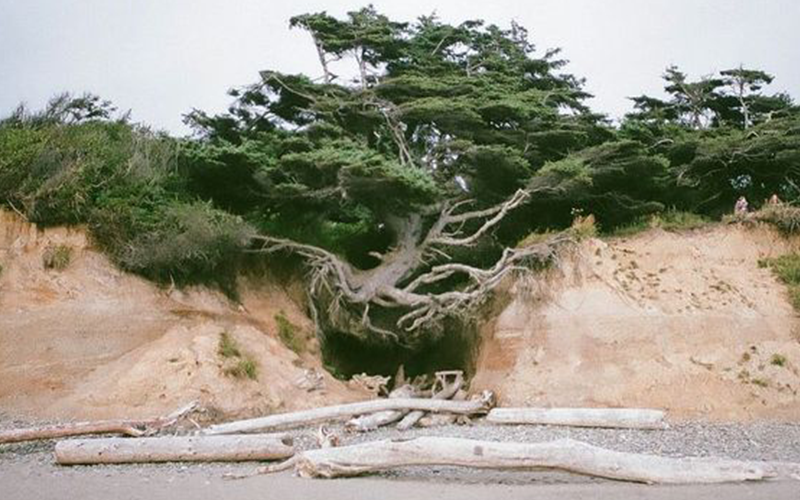
In anticipation of terraforming, gene-splicing was used to design a genus of trees uniquely adapted to a temperate, highly exposed, coastal environment. Needle-like leaves reduce water loss through transpiration and a waxy cuticle protects the flesh from wind-driven salt and sand. This dense canopy acts as a windbreak, while their characteristic network of stilt roots stabilize the shoreline and reduce the erosive impact of tidal action. These specialized roots filter up to 95% of the salt out of seawater absorbed into the plant open_in_new ——as a result, the trunk can be “tapped” for fresh water which has a sharp, distinctive flavor.
Reproduction
The cones of most species in the genus remain tightly closed until they are swept from the tree by an exceptionally high tide open_in_new . As the current carries the cones away from their progenitor, the saltwater softens their resinous seal and disperses the seeds within. The seeds naturally drift into a vertical orientation where the denser, pointed end lodges into the softened ground while the more buoyant end oscillates in the wave action, causing the seed to “burrow” into its new home where it will eventually germinate.